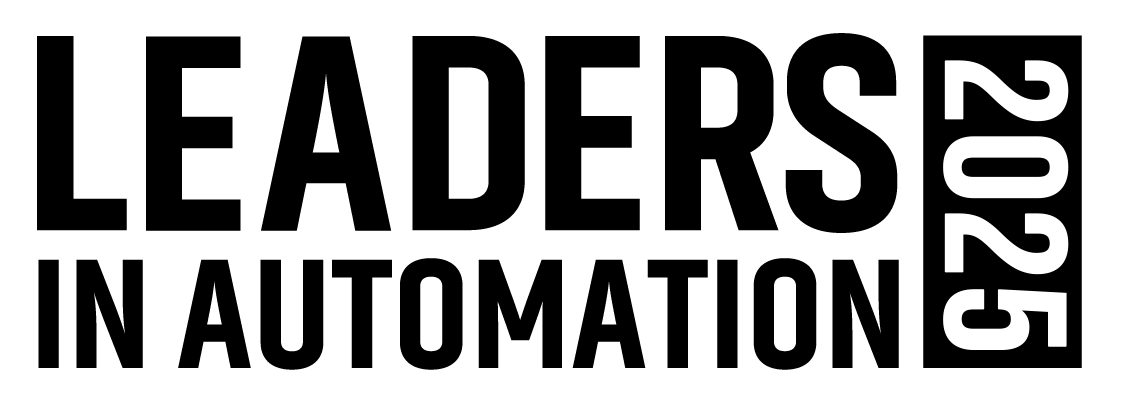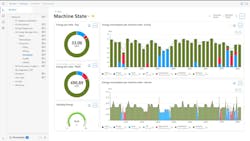How AI, Digital Twins and Core Automation Technologies are Driving Industrial Sustainability and Greater ROI
- Manufacturers are combining smart sensors, AI-powered analytics, and digital twins to optimize energy use, reduce waste and extend equipment life while delivering measurable ROI in under two years.
- Software platforms can now automate the collection and analysis of sustainability metrics, enabling real-time monitoring of energy consumption, emissions and waste reduction goals with transparent, auditable reporting.
- A critical step toward automating sustainability initiatives requires manufacturers to address integration complexities between older equipment and modern automation platforms.
Once considered an optional sociopolitical topic, sustainability has become a prime consideration across manufacturing sectors. Sustainable manufacturing involves producing products using methods that limit negative environmental impacts while reducing energy consumption and the use of natural resources. Sustainable automation combines environmentally friendly practices with automated technologies such as robots and artificial intelligence (AI) to optimize resource use, reduce carbon emissions and boost overall efficiency.
In addition to reduced waste, the U.S. Environmental Protection Agency (EPA) lists more advantages of pursuing sustainable strategies. These include enhanced employee and product safety, greater innovation in product design and processes, cost savings and greater brand reputation that enables businesses to reach more new customers.
Like other manufacturing initiatives, the pursuit of successful sustainability is not without challenges, particularly when it comes to choosing the most effective technologies or tracking sustainability metrics and costs.
Automation tools for sustainability
Manufacturers are fortunate in that numerous effective technologies are available to help them achieve sustainability goals. A combination of technologies across sensing, control and analytics are easily enabling sustainability in manufacturing.
By accessing data from refinery historians and applying calculations and contextualization for quarterly regulatory emissions reporting, Chevron was able to build a custom solution for extracting final emissions data and format it for direct integration into their GHG reporting software. This enabled Chevron to cut analysis time from more than two days to a few hours.
Andrea Ruotolo, Rockwell Automation’s global head of customer sustainability, points to smart sensors, variable frequency drives (VFDs) and energy-efficient motors. She also noted that the use of digital twin technologies, AI-driven energy management systems and predictive maintenance tools are on the rise to reduce waste, optimize resource use and extend equipment life.
Eryn Devola, head of sustainability at Siemens Digital Industries, believes digital twins are crucial for manufacturers to achieve sustainability while enhancing performance. She pointed out that connecting PLCs, sensors and digital twins with AI enhancement multiplies their impact. The reason? AI can analyze vast production-related data streams in real time to deliver predictive maintenance alerts, optimize energy use and allow automation systems and robotics to self-adjust for maximum efficiency and throughput. Together, these technologies transform sustainability into an ongoing data-driven process that reduces environmental impact while increasing competitiveness.
From a software standpoint, Damien Munroe, vice president of partner development at Control Station, points out that control loop performance monitoring (CLPM) tools and technologies can continuously analyze PID loops to identify oscillations, valve stiction and tuning issues that waste energy, create off-spec product and degrade equipment. Industrial IoT platforms can aggregate data from CLPM systems into dashboards, enabling energy management systems to track key performance indicators, automate reporting and align operations with the ISO 50001 energy management standard.
Tracking and reporting sustainability metrics
Because reducing waste is a major goal of sustainability, it is critical that manufacturers monitor the results of their automation efforts. If their methods are not delivering on performance expectations, ROI will suffer significantly.
Chiara Ponzellini, software product manager for the controls and software business at Emerson, sees global manufacturers facing hard questions by regulators, investors, customers and communities. Are we losing energy and where? Are you meeting sustainability targets? Are we improving or just operating under assumptions?
Answers to these questions must be real-time, transparent and actionable. That’s why more manufacturers are turning to technologies that do more than just monitor.
This has led to the availability of numerous platforms that can track, report and automate data workflows. According to Jason Pennington, director of digital solutions at Endress+Hauser USA, what once required a parallel or specific application system 10 years ago can now be delivered by plant control and supervisory systems. As digitalization platforms evolve, we are increasingly seeing the requirement to securely share data via end-user enterprise database and reporting systems, he said.
Legacy systems can be a challenge for sustainability initiatives. Though they are reliable and deeply embedded in core processes, they don’t always speak the same language as today’s automation platforms. Connecting them requires careful planning, deep understanding of system architecture and, often, creative engineering.
Katie Pintar, senior solution consultant at Seeq, sees many manufacturers turning to advanced analytics platforms that specifically handle time series data, which she said is the foundation for most sustainability metrics. These tools, with the support of AI-guided workflows, simplify complex workflows by enabling users to cleanse, contextualize and calculate key metrics directly from raw process data.
Rather than manually extracting and preparing data, manufacturers can automate these steps to ensure consistent, auditable calculations. Once metric generation is complete, data can be sent to business intelligence tools for reporting and decision-making. This not only accelerates the reporting cycle but also empowers teams to continuously monitor progress toward sustainability goals.
Beyond individual products, manufacturers can integrate product-level data with energy and environmental management tools to track impact and identify areas of improvement. Siemens’ Devola said additional tools — like carbon management software — enable the secure exchange of emissions data across the supply chain, empowering organizations to transform siloed information into auditable insights that meet reporting requirements and drive sustainability.
Ponzellini added: “When we examine what’s happening across the manufacturing landscape, a deeper truth emerges: Automation solutions consistently deliver measurable value and that value extends far beyond regulatory compliance or corporate branding.”
Financial considerations around sustainability
Although benefits abound, sustainability tools and strategies can be costly and, therefore, require serious fiscal scrutiny.
Because the upfront investment can seem significant, access to tools like AI-enabled predictive maintenance is quickly becoming a necessary expense. Predictive maintenance prevents equipment failures, reduces downtime and material loss, and extends equipment life.
Regardless of the technology type, key financial considerations include upfront capital costs, payback period and long-term operating expense reductions.
Rockwell Automation’s Ruotolo believes focused automation investments, such as energy optimization or asset reliability tools, can deliver positive ROI in less than two years through reduced downtime, lower energy costs and less waste. There are also indirect financial benefits such as regulatory compliance, ESG performance and access to green financing or incentives.
Before making specific technology decisions in granular areas of sustainability, versus general approaches to energy efficiency and waste reduction, Tadeo Rodriguez, customer sustainability operations lead at Rockwell Automation, believes manufacturers should first get a clear understanding of their exposure to regulations or shadow carbon pricing. If operating in an international environment, for example, the manufacturer must include regulations like the Carbon Border Adjustment Mechanism in the EU, the Safeguard Mechanism in Australia, or having an internal carbon price in its full analyses to accurately assess long term impact on its operations.
Sustainability challenges for manufacturers
Keys to successful sustainability implementations include strategic planning, open data standards, targeted training and a phased and supported approach to modernization.
Control Station’s Munroe pinpoints these implementation strategies:
- Link initiatives directly to measurable business outcomes like lower operating costs and enhanced brand reputation.
- Present a clear ROI with data-backed projections to show how sustainability drives long-term profitability.
- Align proposals with strategic goals like digital transformation and investor expectations to position sustainability as a competitive advantage, not just a cost.
Emerson’s Ponzellini pointed to legacy systems as being a common sustainability challenge. “Though reliable and deeply embedded in core processes, they don’t always speak the same language as today’s automation platforms,” she said. “Connecting them requires careful planning, deep understanding of system architecture and, often, creative engineering.”
Establishing reliable data flows can involve not only protocol translation, but also physical retrofitting, particularly when older equipment lacks built-in sensors or diagnostic capabilities.
Another legacy equipment-related issue is the accumulation over decades of a mix of equipment and software from multiple vendors. This creates a complex ecosystem where systems operate in isolation, thereby limiting the ability to coordinate actions or aggregate data at scale. To meet sustainability goals, manufacturers must break down those silos to enable a unified view of operations spanning machine-level insights to enterprise-wide key performance indicators.
This all-too-common scenario leads to data quality and availability challenges. While newer automation technologies generate detailed, contextualized data ready for analytics and reporting, older systems may only provide high-level summaries, or none. This limits visibility into critical sustainability indicators like energy consumption, water usage or CO? emissions.
But not all sustainability challenges are technical. According to Ponzellini, human factors play a significant role. Many teams work within familiar systems and may be wary of disruptive change. At the same time, sustainability automation requires new competencies ranging from data analytics and cybersecurity to cross-functional collaboration. Managing this cultural shift is as important as managing technology itself.
When we examine what’s happening across the manufacturing landscape, a deeper truth emerges: Automation solutions consistently deliver measurable value and that value extends far beyond regulatory compliance or corporate branding.
“The path forward is about making smart and strategic upgrades,” said Ponzellini. “Layering new capabilities onto existing infrastructure in a way that’s scalable, reliable and aligned with long-term goals is critical.”
Sustainability experiences in real-world industrial scenarios
Following are a few case studies that illustrate the benefits of making sustainability a priority:
Multinational energy corporation Chevron sought to automate regulatory compliance reporting for greenhouse gas (GHG) emissions across its refineries. To automate this workflow, the company used Seeq on Microsoft Azure to access data from refinery historians and apply calculations and contextualization for quarterly regulatory emissions reporting. Features in the software enabled Chevron to build a custom solution for extracting final emissions data and format it for direct integration into their GHG reporting software.
This enabled Chevron to reportedly cut analysis time from more than two days to a few hours. In addition, the up-to-date emissions performance information enables the company to take a proactive approach to emissions identification, resulting in emissions prevention rather than hindsight reporting.
High-end Italian leather and fabric bonding company Samuel Tailored Bonding has implemented Emerson’s Movicon.NExT industrial software platform across its production facility and adjacent residential areas. With the software’s ability to deliver real-time insights across its plant, Samuel Tailored Bonding was able to gain full control over energy consumption, water use, lighting, climate control and irrigation.
In the glass industry, Siemens helped reduce greenhouse gas emissions and water consumption at Stoelzle Glass Group with its Simatic Energy Manager connected to SiGreen. By identifying energy- and carbon-related key performance indicators and developing a metering concept, Siemens helped the company reduce its natural gas use by as much as 20% and cut municipal water consumption by 50%. Via integration of data from process and production systems, data about Stoelzle Glass Group’s emissions are standardized across its sites, making sustainability performance visible and reportable.
More sustainability insights from Automation World:
About the Author

Leaders relevant to this article:






